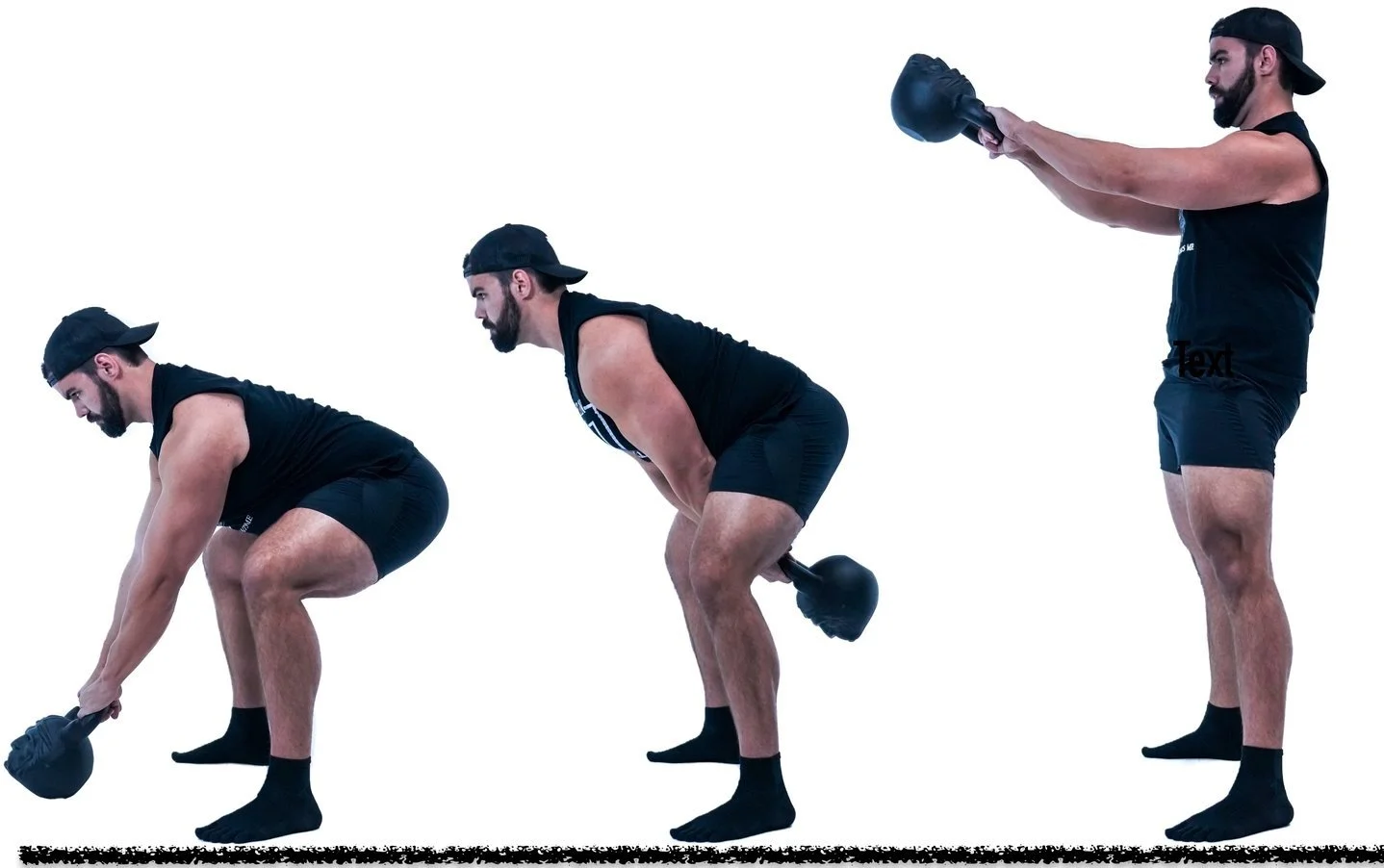- Wearing thick soled shoes: go barefoot or wear flat soled shoes (Converse chucks). Most shoes have an elevated heel which cause you to rock back and forth creating unnecessary instability within the ankle. Rooting your feet to the ground is very critical when training with kettlebells because strength comes from the ground up.
- Stance is too wide: stance should be shoulder width. Try to jump in a wide stance versus a shoulder width stance and tell me which is more powerful.
- Squatting Down: When approaching the kettlebell you want to "chop at the hips” and hinge them back (not down like in the squat). The kettlebell swing in contrast is a jump that doesn’t leave the ground or is a fast deadlift. There’s a famous Bruce Lee saying “if you can’t do it slow, you can’t do it fast." So earn your prerequisites first by understanding the value of the hip hinge.
- Kettlebell positioned too close: when you swing a kettlebell from a start position it needs to be a foot away from you - so “chop at the hips” hinging them by reaching, grabbing, and then TILTING the kettlebell. It’s very important to tilt the kettlebell because you're now putting it into a favorable position for the pendulum phase versus just pulling it back forcefully into the backswing. To maintain your hip hinge the kettlebell must be hiked ABOVE the knees the entire process (if it goes below you’re at risk of flexing at your lumbar spine and at possible risk of injuring it).
Holding Your Breath During the Swing
When holding your breath in any exercise - it’s instantly compromised. Holding your breath is an immediate sign the nervous system is trying to protect itself by limiting as much movement as possible because it hasn't been trained and has no idea what the purpose is. Training the diaphragm (a breathing muscle below the lungs) to contract up and down for more power is just as important as any other muscle group and is rarely talked about. This is why it’s so important to have experience around you when first learning the kettlebell swing (hence a StrongFirst Kettlebell Instructor). The nose should inhale by sniffing in at the backswing and then exhale at the top of the swing; grinding the air between the teeth with a "tsst" type sound. This engages the core by making it brace to protect the spine and send the air down into it. Hollowing or blowing the air out flexes the spine, and sends the exhaled air up into the chest & head...resulting in a weak swing . The naked swing (no kettlebell) is an easy fix to make someone more comfortable to learn the biomechanical breathing match to train the diaphragm and the timing of inhaling & exhaling properly - watch the demo here:

